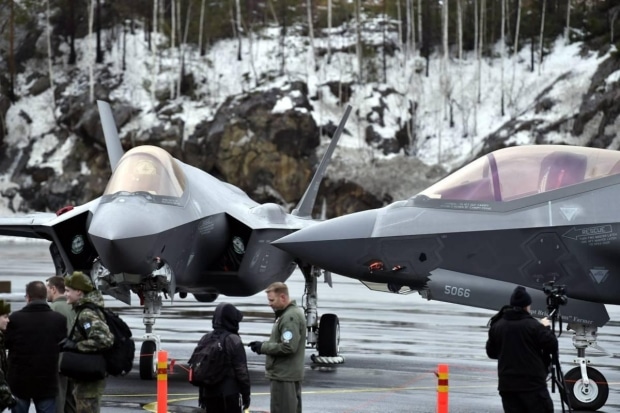In a bid to boost the F-35 sales to NATO allies, the United States government and defense manufacturing giant Lockheed Martin have made an official proposal to the Swiss Government for the 5th-generation aircraft.
The move comes at a key moment after the neutral country’s referendum to acquire new fighter jets replacing the old F/A-18C Hornet airframes, following which the country approved a $6.5 billion budget for the procurement in late September.
Then, the United States was quick to grasp the opportunity to push its aircraft to the Swiss Government, when its State Department approved two possible Foreign Military Sales of forty F-35s (for an estimated cost of $6.58 bn) and thirty-six F/A-18E/F Super Hornets (for an estimated cost of $7.5 bn) each.
Interestingly, this official proposal comes just a day after Germany along with the manufacturing company Airbus officially placed their bid to sell Eurofighter Typhoons to Switzerland. The offer was placed with the support of other Eurofighter nations and the associated companies (BAE Systems and Leonardo).
The French-made Rafales are also in the competition, according to sources.
“We are confident that our F-35 offer is the best and most affordable solution for the Swiss NFA competition,” said Greg Ulmer, F-35 Program vice president and general manager. “We are offering the only 5th generation fighter at the cost of 4th generation aircraft while offering Switzerland an aircraft that will protect Swiss sovereignty for decades to come.”

Lockheed Martin also stated that the offer also offers a great opportunity for the Swiss defense industry. “Should the F-35 be selected as the new fighter for Switzerland, this industrial work would take place in all Swiss regions. Swiss industry has the opportunity to compete for direct production of components for use on all F-35s produced, sustainment projects focused on supporting the Swiss Air Force and enhancing Swiss autonomy, and cybersecurity projects directly related to the F-35,” it said.
The Swiss Air Force has been criticized for its ‘office-hours’ only availability. While the radar coverage is 24/7, its aviation components have proved to be incapable of maintaining such operational readiness due to low budget and lack of staff. The service’s availability is from 0600 to 2200 hours local time only (week-days), and during the gap, it relies on the Air Forces of other countries (France and Italy) to carry out sorties over its airspace.
This became painfully clear as the Swiss Luftwaffe was unable to respond to the Ethiopian Airlines ET702 hijacking in 2014 because the incident occurred outside normal office hours, which are 08:00–12:00 and 13:30–17:00 Monday to Friday; a Swiss Air Force spokesman stated: “Switzerland cannot intervene because its airbases are closed at night and on the weekend. It’s a question of budget and staffing.”
To counter this issue, the service aims to establish a full-time availability by the end of 2020, implementing a quick reaction alert readiness of two armed F/A-18 fighters. Switzerland currently operates about 30 F-5E and 25 F/A-18 Hornet fighter jets.




